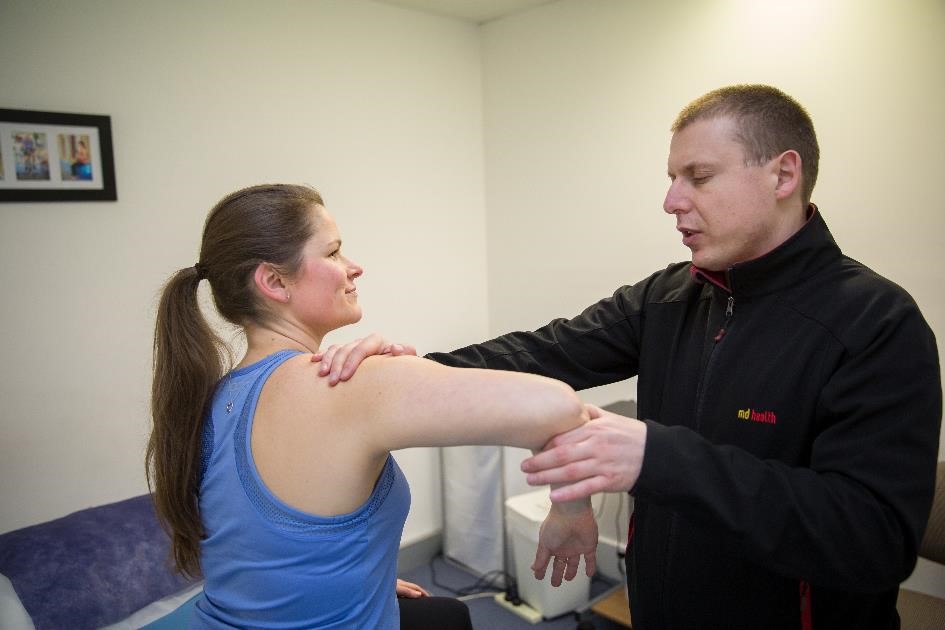Frozen Shoulder (AKA Adhesive Capsulitis) - Fact Sheet
What is a Frozen Shoulder ?
A frozen shoulder is a condition characterized by inflammation, scarring and tightening of the connective tissue surrounding the shoulder joint, usually resulting in a large loss of shoulder movement. Frozen shoulders most commonly occur in people over 40 years of age and typically affect women more than men.
What causes it?
The exact cause is not known, but it is thought to occur following injury or damage to the shoulder joint or adjacent soft tissue. In these cases, a frozen shoulder is more likely to develop if the initial injury is not treated appropriately.

Signs and Symptoms of Frozen Shoulder?
Frozen shoulders can generally be divided into 3 phases, each of which can last a number of months:
- Pain – the shoulder typically becomes painful with most movements and may also start to stiffen. During this phase other injuries of the shoulder may be misdiagnosed, as the general “freezing pattern” is yet to occur.
- Freezing – a marked loss of movement of the shoulder, coinciding with scarring of the shoulder joint capsule. This follows a very particular pattern, which is why frozen shoulders are most commonly diagnosed in this phase. Patients typically experience difficulty when elevating the arm or taking their hand behind their back. Pain may decrease noticeably during this phase, but stiffness increases dramatically.
- Thawing – In this final phase, the shoulder spontaneously begins to ‘loosen’ up and movement to the shoulder is gradually restored.
.

Treatment of Frozen Shoulder ?
The physiotherapist, osteopath or Exercise Physiologist can help diagnose a frozen shoulder and may also request an MRI of the shoulder to confirm. Unfortunately, there is no “fix” for frozen shoulder once it has set in, and you need to allow it to run its course. Treatment is aimed at minimizing pain and maintaining range of movement and function.
Strengthening Exercises: Play an important role in maintaining as much shoulder strength and function as possible.
Mobility Exercises: Generally begin at the end of the freezing phase or beginning of the thawing phase. These aim to maximise the available range of motion of the shoulder.
Other interventions: an injection called a hydrodilation can help restore shoulder range of movement more quickly. These are normally performed under ultrasound and give decent results.
Prognosis: Frozen Shoulders can last anywhere from 3-18months. In a minority of cases, even though pain is completely resolved, full range of movement may never return.
A positive attitude! These issues will take some time to resolve, so don’t get disheartened! You WILL get better!




